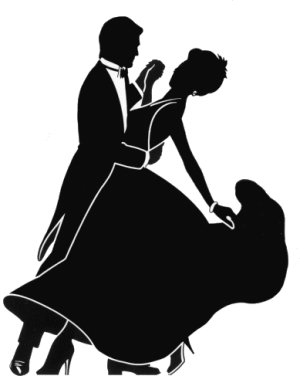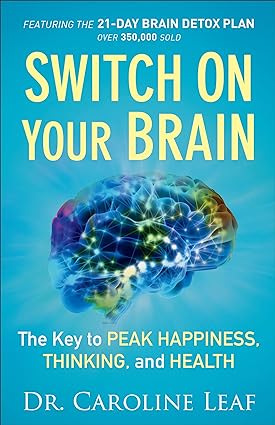The Brain and Dancing

Research suggests that the fun and engaging activity of dancing can have anti-aging effects on the brain and improve balance of those who practice regularly.
My belief is that “Disease Does Not Have to Accompany Aging.” I believe this because both God’s Word declares it and science is now beginning to prove this.
The Aging Brain?
Many still believe widespread statements about our mental capacity decidedly declining as we age. Is this really true?

This may be exactly true for those who believe and declare these statements, or for those who refuse to exercise their brains.
The Greatest Gift
God says that you and I are fearfully and wonderfull made. He says we have opportunity (His Gift) to become “new creations in Christ Jesus” II Cor 5:17 by receiving Him as our Lord and Savior and believing and obeying His word.

More Recent Scientific Research
Scientific research in the past two + decades has proven that we are not limited to a certain number of brain cells which die daily and cannot be revived. This amazing computer God has given us is infinite in its growth potential. Dr. Caroline Leaf, a clinical and research neuroscientist has researched the mind-brain connection, the nature of mental health, and the formation of memory since the early 1980’s.
Dr. Leaf was one of the first in her field to study how the brain can change (neuroplasicity) with directed mind input. She has helped hundreds of thousands of students and adults learn how to use their mind to detox negative thoughts (black trees in the mind) and grow their brain to succeed in every area of their lives.
Switch on Your Brain
One of the best books I have studied on detoxing negative destroying thoughts and replacing them with long life giving Biblical thoughts is Dr. Leaf’s book Switch on Your Brain
Quoting a notable researcher of the Centenarians (those honorable ones who live to and beyond 100):
“We grow old because we are too lazy not to.”
We can’t be lazy. We must learn and continue learning and trusting God for His wonderful promises of living long. His word gives us exact principles to follow on How to Live Long with Abundant Health.
“Beloved, I wish above all things that you would prosper and be in health, even as your soul prospers.” III Jn 2
What About Dancing?

Previous research on the aging brain has shown that exercise has a positive effect, but a new study suggests that dancing may be more beneficial than endurance training for reversing the cognitive effects of aging.
The Study
The journal Frontiers in Human Neuroscience published the study on June 15, 2017. The results show that older adults who regularly engage in physical exercise can actually reverse the signs of aging in the brain.
This study looked at which kinds of exercise, provide the most benefit.
Dr. Kathrin Rehfeld, from the German center for Neurodegenerative Diseases in Germany, is the lead study author.“Exercise has the beneficial effect of slowing down or even counteracting age-related decline in mental and physical capacity,” says Dr. Rehfeld.
“In this study, we show that two different types of physical exercise (dancing and endurance training) both increase the area of the brain that declines with age. In comparison, it was only dancing that led to noticeable behavioral changes in terms of improved balance.”
Methodology
The study participants included 52 healthy adults aged 63-80 years, with the average age being 68. The researchers randomly assigned each participant to one of two exercise groups for 18 months.
One group was participated in 90 minutes of strength-endurance training each week, while the other group engaged in a 90-minute dancing lesson each week for the course of the 18 month study.
It is important to note that while the strength-endurance group repeated similar repetitive exercises each week such as cycling and nordic walking, the dancing group was presented with new and different dance techniques in each session.
“We tried to provide our seniors in the dance group with constantly changing dance routines of different genres (Jazz, Square, Latin-American and Line Dance),” said Rehfeld.
“Steps, arm-patterns, formations, speed and rhythms were changed every second week to keep them in a constant learning process. The most challenging aspect for them was to recall the routines under the pressure of time and without any cues from the instructor.”
The Results
At the conclusion of the 18-month study period of exercise interventions, each participant was examined with magnetic resonance imaging (MRI) to assess changes in the brain. These scans were compared to the images obtained at the outset of the study.
The researchers also assessed the balance of participants using the Sensory Organization Test, both before and after the study.
The results showed that both groups of participants exhibited increased volume in the hippocampus, with the dance group showing the greatest increases. The hippocampus is a region of the brain that is especially vulnerable to age-related cognitive decline. The hippocampus also plays a key role in one’s ability to balance and is the area most affected by Alzheimer’s disease.
Notably, the dance group exhibited an increase of neuronal connections in the dentate gyrus of the hippocampus, an area associated with memory formation, while the endurance training group did not.
Additionally, the dancers showed significant increases in their ability to balance while the strength-endurance group did not.

The authors write, “the dancers showed increases in some HC [hippocampus] subfields where there was no change to be observed in the sports group. This indicates that apart from physical fitness, other factors inherent in dancing contribute to HC volume changes, too.”
It is likely that the discrepancy is due to the novelty involved in the learning process of dancing, while strength and endurance training is repetitive and does not challenge the brain in the same way.
Dancing for A Younger Brain
Dr. Rehfeld concludes the paper with some advice for those seeking to stave off cognitive decline.
“I believe that everybody would like to live an independent and healthy life, for as long as possible. Physical activity is one of the lifestyle factors that can contribute to this, counteracting several risk factors and slowing down age-related decline. I think dancing is a powerful tool to set new challenges for body and mind, especially in older age.”
References
http://journal.frontiersin.org/article/10.3389/fnhum.2017.00305/full
https://www.sciencedaily.com/releases/2017/08/170825124902.htm
http://www.medicalnewstoday.com/articles/319181.php
https://www.nytimes.com/2017/03/29/well/walk-stretch-or-dance-dancing-may-be-best-for-the-brain.html?mcubz=0





